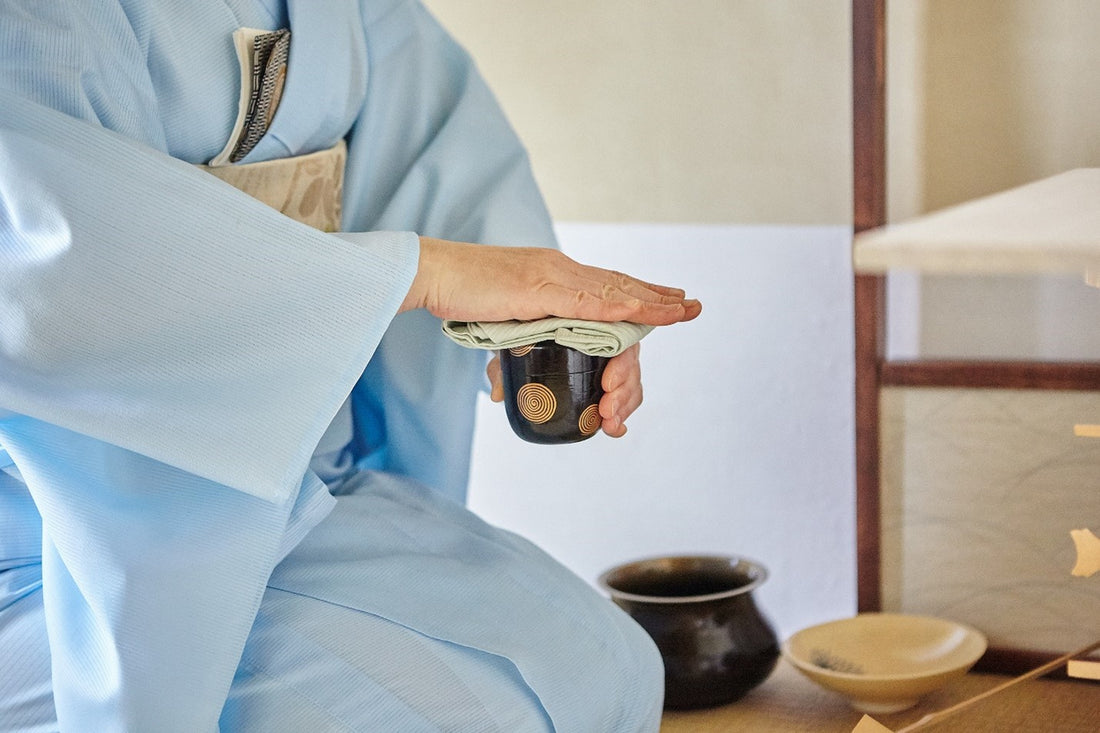
The Origins of Ceremonial Matcha
Share
Ceremonial grade matcha is ubiquitous with a superior quality tea. With the proliferation of matcha on the market, the desire for consumers to become more educated on matcha, its history, and the difference between matcha grades is becoming more pervasive. In this article, we’ll uncover the unique history of ceremonial matcha and how it’s produced today.
Brief History of Matcha

Green tea arrived in Japan through a Japanese priest, Eisai, who brought back green tea seeds from his travels to China. The first green tea plants in Japan were grown by monks in a small town inside Kyoto. Canopy shading of the tea leaves began in the 16th century, leading to the creation of matcha and Gyokuro as we know it today. Later in the century, a Japanese tea master, Sen no Rikyū, introduced several important elements to chanoyu, the tea ceremony. Due to the labour-intensive nature of making matcha, it was perceived as a delicacy and hence, only reserved for nobility classes. This became an advantage for skilled tea growers, as it provided a sustainable source of income.
Uji, Kyoto is considered a region in Japan that produces some of the best quality matcha. There are only 60 families left in Uji that produce ceremonial matcha. Tea cultivation is taken very seriously in Japan and has been passed down to several generations. Even tea masters who create matcha blends generally train their entire lives to hone their craft.
Are there Regulatory Standards for Ceremonial Grade Matcha?
Officially, no. Ceremonial grade is mainly used to describe higher quality matcha, its name deriving from the sacred tradition of tea ceremonies in Japan. Technically, any matcha brand can use the term “ceremonial” in their labelling, and it’s challenging to find out exactly how they make their matcha unless you do some investigating.
Domatcha was the first North American matcha company to coin the term “ceremonial matcha.” It was named as such to honour the unique role tea ceremonies played in Japanese tea culture. The gentle and humbling practice of tea ceremonies is the ambiance that John Harrison, founder of Domatcha, wanted to be evoked through drinking matcha. Just as creating high-quality, ceremonial matcha was a painstakingly slow process; John wanted to bring a little bit of that slowness and appreciation back to North American culture.
What is Involved in Cultivating Ceremonial Matcha?
Producing ceremonial grade matcha is a highly labour-intensive process that takes an entire year. Harvest season is only three months long; during this time, the green tea plants are shaded with plastic or straw canopies. This step slows down photosynthesis and the natural development of catechins in the leaves. Too much catechins produce a bitter taste. Shading also allows the green tea plants to produce more chlorophyll, giving it its signature emerald colour and L-theanine, the amino acids responsible for the rich umami flavour of matcha.
Ceremonial matcha is made from the first harvest and from tea plants that have only been plucked once. Only the first leaves (near the top of the plant) are reserved for ceremonial grade matcha. First leaves are tender and come off the branches quickly, while leaves below the first layer are used for lower grades of matcha.
After the leaves have been hand-picked and collected, they are transferred to an industrial steamer within a day of picking to prevent the leaves from oxidizing. Green tea leaves oxidize and turn brown quickly, so this step is essential. Then, the leaves are either dried by air or heat; the latter producing a slightly roasted aroma.
After the moisture is removed, the leaves are sorted, deveined and destemmed to ensure that the matcha contains no bitterness from the stems. Finally, the tencha is ground slowly with a stone mill to produce a fine powder.
How Ceremonial Matcha Tastes

Ceremonial matcha should have a grassy and fragrant aroma upon opening the tin. When sipped on as tea, it should not taste bitter at all. Instead, the tea should be rich in umami with a slight hint of natural sweetness. It should coat your mouth nicely and not contain any harsh, bitter, or sour aftertaste. A fine, powdery texture and vibrant green hue characterizes good quality matcha. Conversely, yellowish-green or brownish-green matcha is indicative of a lower-quality product.
The best way to know if matcha is good quality is through sight, scent, and taste. If one of those factors is off, it’s probably not truly “ceremonial grade” as advertised.
A major sign of low-quality matcha comes down to the price. Anything that seems suspiciously measly for matcha should raise some red flags. Due to several factors such as: the amount of work required to produce ceremonial matcha, limited producers that do it, plus lower yield, makes low pricing next to impossible. So when the price is unusually low, it usually means that the manufacturer is cutting costs elsewhere, diminishing the quality of the final matcha product.
This video by Business Insider does a great job explaining why ceremonial matcha is so expensive if you want to learn more about the process.
When You Know, You Know
High-quality, ceremonial grade matcha is not a trade secret, but it’s certainly getting harder to differentiate and find in the sea of ‘ceremonial-grade’ matcha. Direct-to-consumer online selling has opened the floodgates to various matcha companies competing in this billion-dollar market. This is why understanding the effervescent process of creating this spectacular green powder should prove to be helpful. Like most things, you’ll know when you taste it.